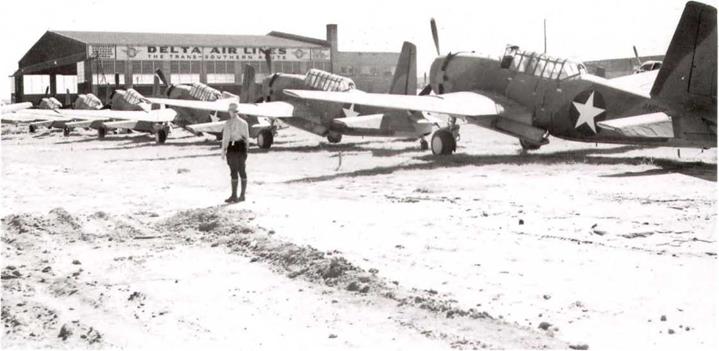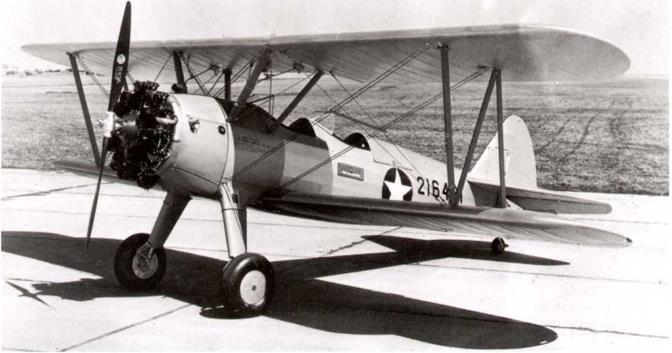Spec. No. 24114-A, Camouflage Finishes for Aircraft issued September 4,1942
The various changes discussed in the preceding pages made it necessary to revise Spec. 24114 and the revised – Aversion was released on September 4, 1942. The major changes were:
Application. – One coat of zinc chromate primer was now required to be applied to all exterior metal surfaces. This was to be followed by one of two types of camouflage finishes as follows:
All exterior metal surfaces (except for insignia and markings) were to be coated with two coats of camouflage lacquer or with one coat of camouflage enamel.
The entire airplane was to be coated with either lacquer or enamel. In no case was lacquer to be used for upper surface and enamel for the lower surface or vice-versa,
The splotches referred to earlier were now called out, as was the overspray at the color boundary lines.
If specified, the upper surfaces could be coated with Medium Green, Shade No. 42; White, Shade No. 46; or Sand, Shade No. 49, in lieu of the usual Dark Olive Drab Shade No. 41 (note: this was the first use mentioned of the new Sand Shade No. 49, rather than the earlier Sand No. 26).
All under surfaces were to be painted Neutral Gray Shade No. 43, or if specified, Black, Shade No. 44.
Note re Camouflage and Air Defense of American Installations, AAF Chief of Staff, September 9,1942.
The following very interesting note was written to the Corps of Engineers, by the Chief of Staff, USAAF, on September 9,1942:
1. If and when the German offensive in Russia is completed there will be a concentration of German aircraft on the Western Front. When this occurs, more intensive German bombing activities can be expected against American airdromes and American installations. Fullest measures should be taken for the camouflaging of installations of the VIII Air Force Service Command and steps should be taken to ask for proper units for air defense. It is desired that your section restudy camouflage or air defense requirements with the above in mind and report to this office any change which you recommend.
This is a graphic reminder that the future course of the war in Europe was anything but certain in view of the then power of the Third Reich.
|
|
Vultce Vengeance Mk. Us awaiting conversion to the target towing role for the AAFat Delta Air Lines, Atlanta facility. Serial no. on the nearest aircraft is AN59? (Delta Air Lines via Talbott)
|
|
Another view of the Vengeance Mk. IIs at Delta Air Lines for conversion. More than 18 can be seen in this photograph. Only visible serial no. is AN594. (Delta Air Lines via Talbott)
|
|
Spec. No. 98-24113-A, amendment No. 6, September 12,1942, completely deletes blue and yellow finishes for trainer aircraft.
This revision to Spec. 241I3-A, “Color for Army Air Corps Airplanes,” finally caught up with the times and changed its title to read “Colors for Army Air Forces Airplanes.”
Of greater substance, it finally deleted all requirements for blue and yellow finishes for trainer aircraft, and stated that color requirements for camouflaged aircraft were to be in accordance with Spec. No. 24114. The finished color scheme for painted surfaces was to be as follows for the parts listed:
|
|
Stearman PT-17-BW, 42-16421, is seen in the all-aluminum finish adopted in September 1942, replacing the true blue and orange yellow scheme. 3,064 of this version were built. (Harry Gann)
 |
Exterior (Exposed) Surfaces.
Wings and Control Surfaces, Including

 Ribs, Spars, and all interior structures Fuselage, excepting compartments for personnel, luggage and cargo Cockpits for pilots and observers which
Ribs, Spars, and all interior structures Fuselage, excepting compartments for personnel, luggage and cargo Cockpits for pilots and observers which
are open or for which sliding enclosures arc provided
Closed cockpits, the top and sides of
which form part of the fuselage structure
Seats and upholstering for seats, carpets, drapes, etc.
Passenger compartment (transport airplanes)
Luggage, cargo and bomb compartment
Notes: (1) Aluminum: see Spec. No. 98-24113-A, dated September 9, 1938.
(2) Yellow green shall be prepared in accordance with spec, no. 3-100.














